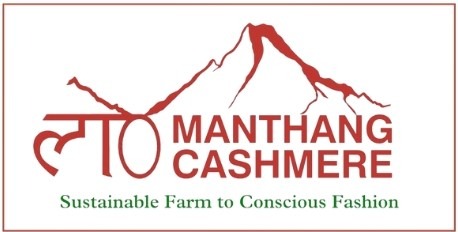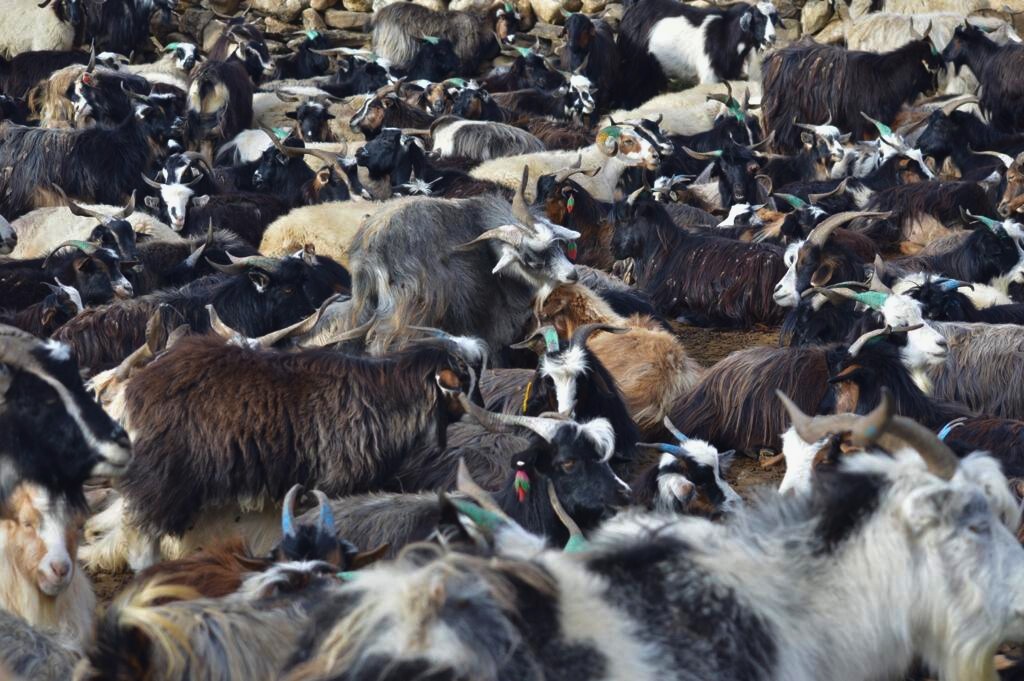The process of turning raw pashmina fiber from Chyangra goats into fine yarn is detailed and requires careful handling at every stage. It involves research, breeding, traditional hand-combing, fiber processing, and spinning. This journey ensures that Nepalese pashmina remains one of the finest and most luxurious textiles in the world.
1. Scientific Research Center, Pokhara
In Pokhara, scientific research centers focus on improving pashmina production. They study Chyangra goats to select the best ones for breeding, ensuring high-quality wool. These centers also take care of goat health, providing vaccines and balanced diets to keep the goats strong and healthy. Their research helps in producing fine, soft, and durable pashmina fibers while ensuring the well-being of the goats.
2. Breeding Center, Charang, Upper Mustang
The breeding center in Charang, Upper Mustang, works on raising high-quality Chyangra goats. Experts there carefully breed goats that produce the best wool, ensuring each generation is better than the last. They use special techniques to track the goats’ genetics and improve fiber quality. This center plays a key role in increasing the supply of fine pashmina fiber while maintaining ethical breeding practices.
3. Freely Grazing Mountain Goats
Chyangra goats are raised in high-altitude regions like Upper Mustang, where they graze freely in the mountains. They feed on natural herbs and grasses, which helps their wool grow soft and strong. This natural lifestyle not only benefits the goats but also enhances the quality of their fiber. The cold climate encourages the growth of a thick undercoat, which is later collected for pashmina production
4. Farmers Association
Local farmers are an essential part of the pashmina industry. They work together in associations to share knowledge and resources. These groups help train herders on better grazing practices, fiber collection methods, and sustainable goat farming. They also ensure fair trade and support farmers in getting the right price for their pashmina fibers.
5. Hand Combing
Every spring, Chyangra goats naturally shed their soft undercoat. Instead of shearing, herders use a gentle hand-combing method to collect the fibers. This process takes time and skill, but it ensures that only the finest and longest fibers are gathered. Hand combing is the most ethical and effective way to collect pashmina without harming the goats.
6. Fiber Collection Unit
After collection, the raw pashmina fibers are taken to fiber collection units, where they are sorted carefully. Workers separate the fibers based on color and quality. This sorting is important because it ensures that the fibers are clean and uniform before they move on to processing. Natural colors like white, gray, and brown are sorted separately to be used in different products.
7. Fiber Processing Unit
At the fiber processing unit, the raw fibers go through a cleaning process to remove dirt and any rough outer hair. After that, the fibers are carefully aligned using a technique called carding, which makes them ready for spinning. Traditional methods are used to preserve the softness of the fiber while making sure it is strong enough for weaving.
8. Hand-Spun Yarn
The final step is spinning the cleaned fiber into yarn. Skilled artisans use a traditional spinning wheel to twist the fibers into fine, even threads. This hand-spun yarn is soft, warm, and durable, making it perfect for weaving into luxurious pashmina shawls and scarves. The entire process from goat to yarn is a blend of tradition and skill, ensuring the finest quality in every strand.
This step-by-step process keeps Nepalese pashmina special, preserving its softness and warmth while respecting traditional practices. Every hand that works on this journey—from herders to artisans—adds value to the final product, making it one of the world’s most treasured fabrics.

